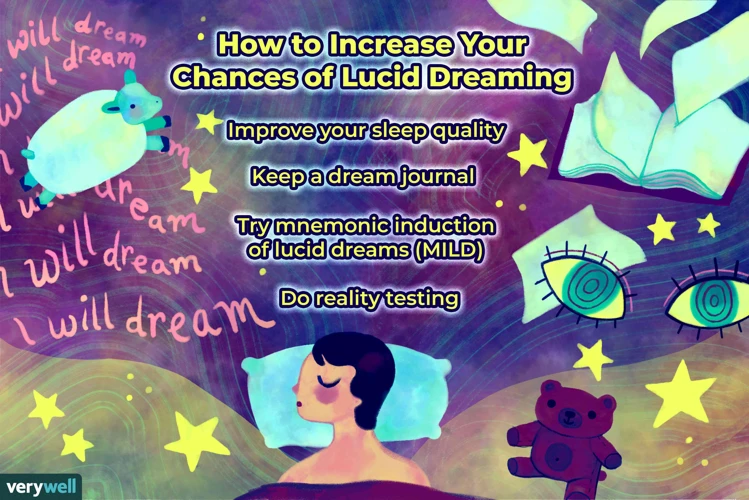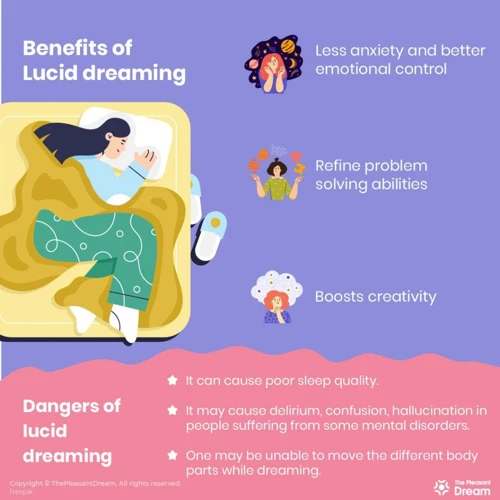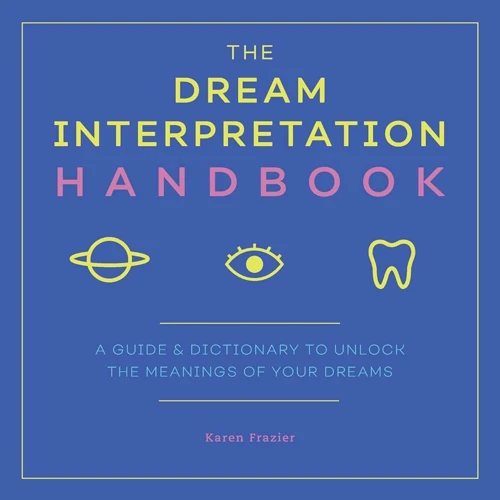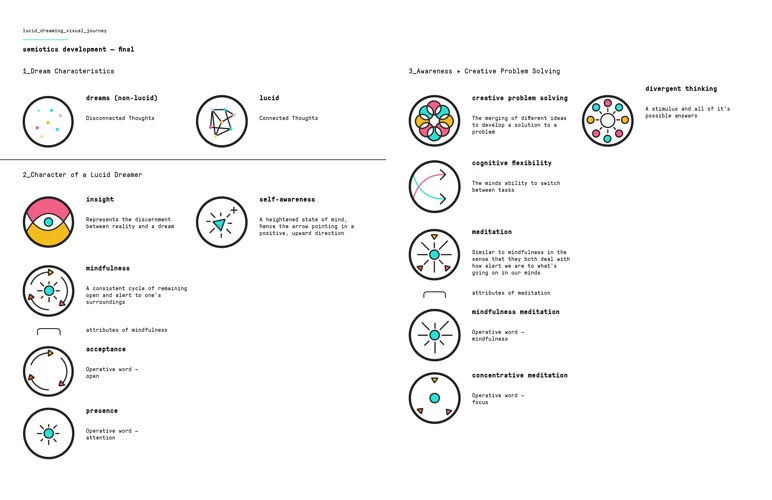Are you ready to unlock the hidden potential of your subconscious mind? Prepare to embark on an extraordinary journey into the realm of lucid dreaming. This phenomenon allows you to become aware and conscious within your dreams, giving you the power to control and shape your own dream experiences. Imagine soaring through the sky, exploring fantastical landscapes, or even delving into the depths of your own subconscious. In this article, we will delve into the world of lucid dreaming, exploring its wonders, benefits, and techniques for achieving this incredible state. Get ready to awaken your mind and discover the limitless possibilities that lie within your dreams.
What is Lucid Dreaming?

Lucid dreaming is a unique state of consciousness in which a person becomes aware that they are dreaming while still in the dream itself. It is as if you have gained access to a hidden level of reality, where you can actively participate and manipulate the dream environment. This phenomenon allows you to engage your senses, emotions, and thoughts in a vivid and lifelike way. The experience of lucid dreaming can vary from person to person, but one common aspect is the feeling of being fully awake and aware, even within the dream world. Many people describe a heightened sense of clarity and control, as if they have unlocked a portal to their subconscious mind. It’s important to note that lucid dreaming is different from sleep paralysis, which is a temporary inability to move or speak during sleep. In contrast, lucid dreaming is an empowering experience that opens up a realm of possibilities for self-exploration, creativity, and problem-solving. To learn more about common techniques for achieving lucid dreams, you can refer to our article on common techniques for lucid dreams.
How Does Lucid Dreaming Work?

Lucid dreaming works by bridging the gap between wakefulness and sleep, allowing individuals to have conscious awareness and control over their dreams. While the precise mechanisms of lucid dreaming are not yet fully understood, several theories explain how it may occur. One theory suggests that during sleep, the prefrontal cortex, responsible for rational thinking and self-awareness, becomes more active during REM sleep, the stage of sleep where dreams occur. This increased activity in the prefrontal cortex may enable individuals to recognize the dream state and become lucid. Another theory proposes that lucid dreaming involves a shift in brainwave patterns, with increased gamma waves associated with conscious awareness. These brainwave changes may facilitate the experience of lucid dreaming. Additionally, research has shown a connection between lucid dreaming and the REM sleep cycle. It is believed that lucid dreams occur primarily during REM sleep, a time when the brain is highly active and dreams are most vivid. To gain a deeper understanding of the relationship between lucid dreaming and sleep, you can explore our article on the connection between lucid dreaming and sleep paralysis. Lucid dreaming not only provides a fascinating window into the inner workings of the mind but also offers numerous benefits and opportunities for personal growth and exploration.
The Benefits of Lucid Dreaming

Lucid dreaming offers a host of benefits that can positively impact various aspects of your life. Firstly, it provides a platform for creativity and problem-solving. When you are aware within a dream, you can actively engage with the dream content, allowing your imagination to run wild and explore new ideas. This can be especially useful for artists, writers, and innovators seeking fresh inspiration. Lucid dreaming can also aid in personal development as it allows you to confront and overcome fears and obstacles. By actively participating in your dreams, you can gain a sense of empowerment and confidence that can translate into your waking life. Lucid dreaming offers a channel for self-discovery and exploration. It provides an opportunity to delve into your subconscious mind, uncovering hidden beliefs, emotions, and desires. This self-awareness can lead to personal growth and a deeper understanding of oneself. To further explore the benefits of lucid dreaming for creative inspiration and problem-solving, check out our article on lucid dreaming for creative inspiration and problem-solving.
Techniques for Lucid Dreaming

When it comes to unlocking the power of lucid dreaming, there are various techniques you can employ to increase your chances of having a lucid dream. One technique is reality testing, which involves regularly questioning your waking state throughout the day to build the habit of questioning reality. Another effective technique is keeping a dream journal, where you record your dreams upon awakening. This helps improve dream recall and awareness, making it easier to recognize when you are in a dream. Meditation and visualization are also powerful tools for lucid dreaming, as they enhance focus and relaxation, making it easier to enter a lucid dream state. Another advanced technique is Wake-Induced Lucid Dreaming (WILD), which involves maintaining awareness while transitioning from wakefulness to the dream state. Additionally, supplements such as vitamin B6 or herbal supplements like galantamine may aid in inducing lucid dreams. Mindfulness and intention setting before sleep are also useful techniques, as they help prime your subconscious mind for lucid dreaming. By incorporating these techniques into your routine, you can increase your chances of experiencing the incredible world of lucid dreaming and tapping into the potential of your subconscious mind.
Reality Testing
Reality testing is a fundamental technique for inducing lucid dreams. The goal is to train your mind to question and assess the reality of your current state, both waking and dreaming. By regularly performing reality checks throughout the day, you can condition your brain to carry out these checks during your dreams as well. Here are some effective reality testing methods:
1. Hand Reality Check: Look at your hands throughout the day and ask yourself, “Am I dreaming?” In dreams, hands can appear distorted, have extra fingers, or change color, providing a clue that you are in a dream.
2. Mirror Reality Check: Look into a mirror and observe your reflection closely. In dreams, your reflection may appear blurry, distorted, or even show a different version of yourself.
3. Nose Reality Check: Pinch your nose while trying to breathe through it. If you are unable to breathe, you are awake. In dreams, however, you can still breathe normally, indicating that you are in a dream state.
4. Text Reality Check: Read a piece of text, look away, and then read it again. In dreams, the text often changes or becomes unreadable when you look away and back at it.
5. Light Switch Reality Check: Flip a light switch on or off. In dreams, the lights may not respond to your actions, providing a clear indication that you are dreaming.
By incorporating these reality testing techniques into your daily routine, you will increase the likelihood of performing them during your dreams. This will create a moment of realization, allowing you to gain lucidity and take control of your dream experiences.
Keeping a Dream Journal
One effective technique for enhancing your ability to have lucid dreams is by keeping a dream journal. Keeping a dream journal involves writing down your dreams immediately upon waking up, before they fade from your memory. This practice helps to improve dream recall, which is essential for recognizing patterns, themes, and dream signs in your dreams. By writing down your dreams in detail, you can begin to identify recurring elements or situations that may signify that you are dreaming. In your dream journal, jot down any specific details, emotions, or sensations that you experienced during the dream. You can also include drawings or sketches if you feel it helps to capture the essence of the dream. Additionally, try to date each entry to track your progress over time. The process of recording your dreams in a journal not only enhances your dream recall but also encourages your brain to prioritize dreams, increasing the likelihood of having lucid dreams. It acts as a powerful tool for self-reflection and self-discovery, allowing you to explore the depths of your unconscious mind and gain valuable insights.
Meditation and Visualization
Meditation and visualization are powerful techniques that can greatly enhance your ability to have lucid dreams. Incorporating these practices into your daily routine can help you cultivate a heightened sense of self-awareness and improve your dream recall.
Meditation: Regular meditation practice can train your mind to be more focused and present, which is essential for becoming aware within your dreams. Find a quiet and comfortable place to sit or lie down and begin by taking deep, slow breaths. Allow your thoughts to come and go without attachment, simply observe them. As you develop a regular meditation practice, you may start to notice an increased ability to recognize the dream state and maintain lucidity within your dreams.
Visualization: Visualization involves using your imagination to create vivid mental images. This technique can be used to set intentions for lucid dreaming or to rehearse specific dream scenarios. Before sleep, visualize yourself becoming aware within a dream, imagine the details of the dream environment, and the actions you want to take. By visualizing yourself as a lucid dreamer, you are programming your mind to manifest this experience during sleep.
It’s important to note that both meditation and visualization require consistency and patience. Like any skill, they improve with practice. Consider incorporating these techniques into your daily routine, gradually increasing the time spent in meditation and the complexity of your visualizations. This will not only enhance your ability to have lucid dreams but also promote overall wellbeing and mindfulness in your waking life.
Wake-Induced Lucid Dreaming (WILD)
Wake-Induced Lucid Dreaming (WILD) is a powerful technique that involves transitioning directly from wakefulness into a lucid dream state. This method requires a high level of focus and concentration. To practice WILD, find a comfortable position and relax your body while keeping your mind awake and alert. As you start to drift off to sleep, you want to maintain a delicate balance between relaxation and awareness. One popular approach is to concentrate on a specific object or visualize yourself entering a dream scenario. As you progress into a deeply relaxed state, you may begin to experience hypnagogic imagery, which are dream-like hallucinations that occur just before falling asleep. Stay attentive to these images without getting too absorbed in them. Eventually, you may find yourself transitioning seamlessly into a lucid dream. This technique requires practice and perseverance, as it can be challenging to maintain the delicate balance needed to achieve a successful WILD experience. However, with dedication and patience, WILD can open up a world of incredible lucid dreaming adventures.
Using Lucid Dreaming Supplements
Using lucid dreaming supplements can be a helpful aid in achieving and enhancing lucid dreams. These supplements are designed to promote a state of heightened awareness, dream recall, and vividness during your dream experiences. Here are some commonly used lucid dreaming supplements:
1. Melatonin: Melatonin is a hormone that regulates sleep and wakefulness. Taking melatonin supplements before bed can promote a more relaxed and restful sleep, increasing the likelihood of having lucid dreams.
2. Galantamine: Galantamine is a natural supplement that enhances memory and cognition. It can be useful for inducing lucid dreams, as it can intensify dream recall and enhance the clarity of the dream experience.
3. Choline: Choline is a nutrient that plays a crucial role in brain function. Supplementing with choline, such as through alpha-GPC or CDP-choline, can promote mental clarity and focus, which may translate to more vivid and lucid dreams.
4. Vitamin B6: Vitamin B6 is involved in the production of neurotransmitters, including those responsible for regulating sleep and dreaming. Taking vitamin B6 supplements before bed has been reported to increase dream recall and vividness.
5. Herbal supplements: Certain herbs, such as valerian root, passionflower, and mugwort, are believed to enhance dream recall and lucidity. These herbal supplements can be taken in various forms, including teas, capsules, or tinctures.
It’s important to note that while these supplements may have potential benefits for lucid dreaming, individual experiences may vary. It is recommended to consult with a healthcare professional before starting any supplementation regimen. Additionally, supplements should be used in conjunction with other techniques, such as reality testing and journaling, to maximize their effectiveness.
Mindfulness and Intention Setting
Mindfulness and intention setting are powerful techniques that can greatly enhance your ability to have lucid dreams. By incorporating mindfulness practices into your daily routine, you can cultivate a heightened sense of awareness and presence. This can extend into your dream state, making it more likely for you to recognize when you are dreaming. One way to cultivate mindfulness is through meditation. Taking a few minutes each day to practice meditation can help you develop the ability to observe your thoughts and sensations without judgment, promoting a sense of mental clarity and focus.
In addition to mindfulness, setting clear intentions before sleep is essential for lucid dreaming. This involves consciously deciding and affirming that you will become aware within your dreams. By repeating positive affirmations and visualizing yourself recognizing and controlling your dreams, you reinforce this intention in your subconscious mind. This sets the stage for a powerful experience of lucid dreaming.
To further enhance the effectiveness of mindfulness and intention setting, you can consider incorporating reality checks into your practice. Reality checks involve questioning your state of reality throughout the day by performing simple tests or observations. For example, you can ask yourself, “Am I dreaming right now?” and then try to push your finger through the palm of your opposite hand. If it passes through, you are in a dream. Performing these reality checks regularly will train your mind to question your reality, increasing the likelihood of doing the same in your dreams.
By integrating mindfulness, intention setting, and reality checks into your routine, you can develop a strong foundation for lucid dreaming. These practices will help you stay present and aware both in your waking life and in your dream experiences, giving you the power to unlock the limitless potential of your subconscious mind.
Tips for Enhancing Lucid Dreaming

To enhance your lucid dreaming abilities, there are several tips and techniques you can incorporate into your practice. Creating a relaxing sleep environment can promote better dream recall and increase your chances of having lucid dreams. Keep a dream journal by your bed and write down any dreams you remember as soon as you wake up. Engaging in reality checks throughout the day, such as questioning your surroundings or trying to read text, can help train your brain to question reality and carry this habit into your dreams. Setting clear intentions before sleep, such as repeating affirmations or visualizing yourself becoming lucid, can also be effective. It’s important to experiment with different techniques, as what works for one person may not work for another. Seeking guidance from experienced lucid dreamers can provide valuable insights and tips for overcoming challenges. By incorporating these strategies into your routine, you can enhance your lucid dreaming journey and unlock the full potential of your subconscious mind.
Create a Relaxing Sleep Environment
Creating a relaxing sleep environment is crucial for enhancing your lucid dreaming potential. Your bedroom should be a sanctuary that promotes deep relaxation and tranquility. Start by keeping your sleeping area clean, tidy, and free from clutter. Remove any electronics or distractions that may interfere with your sleep. Consider incorporating calming elements such as soft lighting, soothing colors, and comfortable bedding. Use blackout curtains or an eye mask to block out any external light that may disrupt your sleep. Keep the room at a cool and comfortable temperature to promote a restful sleep. Additionally, you can introduce relaxing scents through the use of essential oils or aromatherapy diffusers. Lavender and chamomile are known for their calming properties and can help prepare your mind and body for a night of lucid dreaming. Remember, creating a peaceful sleep environment is an essential step in setting the stage for vivid and memorable dreams.
Practice Dream Recall
To enhance your lucid dreaming abilities, one essential practice is dream recall. Developing the skill of remembering your dreams is crucial in order to become aware of your dream patterns, themes, and symbols. It’s common for dreams to be quickly forgotten upon waking, so it’s important to make a conscious effort to remember them. Here are some strategies to improve dream recall:
1. Keep a dream journal: Place a notebook and pen next to your bed, and as soon as you wake up, write down any fragments or details you can remember from your dreams. Even if it’s just a single image or feeling, jot it down. Over time, this practice strengthens your dream recall ability.
2. Record immediately: Don’t delay writing in your dream journal. The longer you wait, the more details will slip away from your memory. Capture the essence of your dreams as soon as you wake up.
3. Focus on emotions: While recording your dreams, pay attention to the emotions you experienced during the dream. Emotions can provide valuable insights into the meaning and significance of your dreams.
4. Create associations: Try to associate dream symbols or themes with your waking life experiences. Look for connections between your dreams and your thoughts, feelings, or events from the previous day. This can help you better understand the messages your dreams may be conveying.
5. Set intention before sleep: Before falling asleep, set the intention to remember your dreams. Repeat to yourself that you will wake up with clear recall of your dreams. This simple intention-setting can significantly enhance dream recall.
By incorporating these practices into your daily routine, you can gradually improve your dream recall abilities. The more you remember your dreams, the easier it becomes to recognize when you are in a dream state, leading to increased opportunities for lucid dreaming and self-exploration.
Engage in Reality Checks
Engaging in reality checks is a fundamental technique to help induce lucid dreaming. Reality checks involve taking a moment during your waking hours to question whether you are in a dream or in reality. By regularly performing these checks, you train your mind to become more aware of your surroundings, increasing the likelihood of experiencing lucidity in your dreams. Here are a few effective reality checks to incorporate into your daily routine:
1. Hand Check: Look at your hands and observe the details. In dreams, your hands might appear distorted, have extra fingers, or look blurry.
2. Mirror Check: Take a look at yourself in a mirror. In dreams, reflections can appear distorted, blurry, or even show a different image altogether.
3. Text Check: Read text or numbers in your environment, then look away, and look back again. In dreams, the text or numbers often change or become unreadable.
4. Nose Check: Pinch your nose and try to breathe through it. In reality, you won’t be able to breathe, but in a dream, it may be possible.
5. Light Switch Check: Flip a light switch on or off. In dreams, light switches might not work as expected, with the light remaining unchanged or flickering.
Make a habit of conducting these reality checks throughout the day. With consistency, this practice will spill over into your dreams, and you’ll start questioning your reality within the dream state as well. By integrating reality checks into your daily life, you increase your chances of becoming aware and entering a lucid dream state. Keep in mind that combining reality checks with other techniques can enhance your overall success in achieving lucidity in your dreams.
Set Clear Intentions Before Sleep
Setting clear intentions before sleep is a crucial step in enhancing your ability to have lucid dreams. This practice involves consciously focusing your thoughts and desires on the act of becoming lucid in your dreams. By setting a strong intention, you are sending a message to your subconscious mind that you want to be aware and in control during your dream state. To do this, find a quiet and calm space before bed and take a few moments to visualize yourself becoming lucid in a dream. Imagine yourself recognizing the dream signs, becoming aware of the dream environment, and taking control of the narrative. Repeat affirmations such as “I will have a lucid dream tonight” or “I am aware and in control within my dreams.” By consistently reinforcing these intentions, you are programming your mind to focus on lucidity during sleep. It’s important to remain patient and persistent with this practice, as it may take time for your subconscious mind to fully integrate these intentions. Setting clear intentions before sleep increases your chances of experiencing lucid dreams and allows you to tap into the incredible power of your subconscious mind.
Experiment with Different Techniques
When it comes to lucid dreaming, there is no one-size-fits-all approach. Each individual may respond differently to various techniques, so it’s important to experiment with different methods to find what works best for you. One technique you can try is the Mnemonic Induction of Lucid Dreams (MILD) technique. This involves setting an intention or repeating a phrase such as “I will have a lucid dream tonight” before falling asleep. Another technique is Wake-Back-to-Bed (WBTB), which involves waking up after a few hours of sleep, staying awake for a short period of time, and then going back to sleep with the intention of having a lucid dream. The Reality Testing technique involves regularly questioning your waking reality throughout the day by performing reality checks, such as looking at a clock or trying to push your finger through your palm. By incorporating these reality checks into your daily routine, you may increase your chances of performing a reality check within a dream, thus becoming lucid. Another technique is known as the Cycle Adjustment Technique (CAT). This involves adjusting your sleep schedule to interrupt your REM sleep cycles and increase the likelihood of becoming lucid. Remember that finding the right technique may require some trial and error, so be patient and persistent in your experimentation.
Seek Guidance from Experienced Lucid Dreamers
Seeking guidance from experienced lucid dreamers can greatly enhance your own lucid dreaming practice. These individuals have spent significant time honing their skills and exploring the depths of the dream world. They can offer valuable insights, tips, and techniques that can help you navigate and maximize your lucid dreaming experiences.
One way to connect with experienced lucid dreamers is through online communities and forums dedicated to lucid dreaming. These platforms provide a space for dream enthusiasts to share their experiences, ask questions, and offer support to one another. Engaging with these communities can provide inspiration, guidance, and a sense of belonging as you embark on your own lucid dreaming journey.
Another avenue to seek guidance is through attending workshops or seminars led by experienced lucid dreamers. These events offer opportunities to learn directly from those who have mastered the art of lucid dreaming. They may teach specific techniques, share personal experiences, and provide guidance on how to deepen your lucidity and explore different aspects of the dream world.
Additionally, some experienced lucid dreamers offer one-on-one coaching or mentorship programs. These personalized sessions can provide tailored guidance and support as you work towards improving your lucid dreaming skills. The guidance you receive from these experts can be invaluable in helping you overcome challenges, refine techniques, and take your lucid dreaming practice to new heights.
Remember, connecting with experienced lucid dreamers not only allows you to benefit from their wisdom and knowledge but also provides a supportive community of like-minded individuals who share your passion for exploring the subconscious realm. Embrace the opportunity to learn from those who have delved deep into the world of lucid dreaming and let their guidance propel you on your own extraordinary lucid dreaming journey.
Exploring Your Lucid Dreams

Once you have achieved lucid dreaming, a whole new world of exploration and adventure awaits you. In your lucid dreams, you can interact with dream characters, manipulate the dream environment, and even engage in learning and problem-solving. Imagine having the ability to have meaningful conversations with dream characters, seek guidance from wise figures, or simply enjoy the company of loved ones who are no longer with you in the waking world. You can also experiment with altering the dream environment, allowing you to fly through breathtaking landscapes, visit exotic locations, or create your own fantastical world. Additionally, lucid dreaming provides a unique opportunity for personal growth and self-discovery. You can explore your own beliefs, confront fears, and tap into your hidden creativity and imagination. Through lucid dreaming, you have the power to unlock the vast potential of your mind and embark on incredible journeys of self-exploration.
Interacting with Dream Characters
Interacting with dream characters is one of the most fascinating aspects of lucid dreaming. When you become aware within a dream, you have the unique opportunity to engage and communicate with the characters you encounter. These dream characters can take on various forms, ranging from familiar individuals to completely unfamiliar entities. Engaging with them can lead to profound experiences and insights. You can initiate conversations, ask questions, and even seek guidance from these characters. Remember, they are a reflection of your own subconscious mind, so their responses may provide valuable insights into your thoughts, emotions, and desires. Some dream characters may be helpful and provide useful information, while others may present challenges or represent aspects of yourself that you need to address. By actively interacting with dream characters, you can gain a deeper understanding of yourself, explore different perspectives, and even resolve internal conflicts. This aspect of lucid dreaming opens the door to a realm of psychological exploration and self-discovery. So, the next time you find yourself lucid within a dream, take the opportunity to engage and learn from the fascinating characters that inhabit your dreamscape.
Manipulating the Dream Environment
Manipulating the dream environment is one of the most exciting aspects of lucid dreaming. Once you become aware that you are dreaming, you can begin to exercise control over the elements within the dream. This means you have the power to shape the world around you, altering landscapes, objects, and even the laws of physics. The possibilities are limited only by your imagination. You can take a stroll through a vibrant tropical paradise, fly through the clouds like a superhero, or explore the depths of the ocean without concern for breathing. To enhance your control, it can be helpful to focus on your intention and visualize the changes you want to make. By tapping into your subconscious mind, you can manifest your desires and watch as the dream environment transforms before your eyes. You may choose to summon people or creatures to interact with, create new scenery or even teleport to different locations. Remember, your mind is the ultimate canvas in the dream world, and you have the ability to paint it with your wildest dreams and fantasies. So embrace your newfound power and let your imagination run wild in the vast playground of your lucid dreams.
Learning and Problem-Solving
Within the realm of lucid dreaming, the potential for learning and problem-solving is virtually unlimited. When you become aware that you are dreaming, you can actively engage with the dream environment and explore new possibilities. This presents a unique opportunity to enhance your skills and expand your knowledge. For example, let’s say you’ve been struggling with a particular skill or subject in your waking life. In a lucid dream, you can practice and experiment with different approaches, free from the constraints and limitations of the physical world. You can repeat an action, refine a technique, or even seek guidance from dream characters who may embody knowledge on the subject. Additionally, lucid dreaming can be a powerful tool for problem-solving. You can use your lucidity to confront challenges head-on, brainstorm creative solutions, and test them out within the dream space. The dream world provides a safe and non-consequential space to explore new ideas and potential outcomes. By harnessing the power of your lucid dreams, you can tap into your subconscious mind’s vast resources and unlock innovative solutions to real-life problems. It’s a remarkable opportunity for personal growth and self-improvement, all while you sleep.
Lucid Dreaming and Self-Discovery

Lucid dreaming offers a profound opportunity for self-discovery and exploration. Within the realm of lucid dreams, you have the ability to interact with dream characters, manipulate the dream environment, and tap into your subconscious mind in ways that can lead to deep insights and personal growth. Interacting with dream characters can provide a unique perspective on your relationships, allowing you to engage in conversations, seek guidance, or even confront unresolved issues. By manipulating the dream environment, you can create scenarios that help you work through fears, overcome obstacles, and unleash your creativity. Lucid dreaming also serves as a powerful tool for learning and problem-solving, as you can practice new skills, simulate real-life scenarios, or explore different perspectives. It’s an extraordinary pathway to gaining a deeper understanding of yourself, your beliefs, and your emotions. Embrace the possibilities that lucid dreaming holds and embark on a journey of self-discovery like no other.
Exploring Personal Beliefs and Emotions
Exploring Personal Beliefs and Emotions:
Lucid dreaming provides a fascinating platform for delving into our deepest beliefs and emotions. When we are conscious within a dream, we can interact with and explore the various aspects of our psyche. In a lucid dream, you can engage with dream characters, who may represent different aspects of your personality or even people from your waking life. By interacting with these characters, you can gain insights into your beliefs, values, and relationships. You may find yourself engaged in deep conversations or experiencing intense emotional interactions that allow you to process and understand your own feelings on a deeper level. Additionally, lucid dreaming can provide a safe space to confront and release suppressed emotions, providing opportunities for healing and personal growth.
To further enhance your exploration of personal beliefs and emotions in lucid dreams, you can experiment with techniques such as journaling. Keeping a dream journal helps in capturing and analyzing dream content, which can reveal recurring themes and symbols related to your beliefs and emotions. Another technique is known as reality testing, where you question the nature of your reality in both waking life and dreaming, allowing you to have more lucid experiences. Practicing mindfulness and setting clear intentions before sleep can help facilitate a focused mindset for exploring personal beliefs and emotions in your lucid dreams. Remember, each lucid dream is a unique opportunity to uncover the depths of your subconscious mind and gain a deeper understanding of yourself.
Confronting Fears and Overcoming Obstacles
In the realm of lucid dreaming, you have the incredible opportunity to confront your fears and overcome obstacles in a safe and controlled environment. When you become aware that you are dreaming, you can consciously face the things that frighten or challenge you. This can be particularly empowering for those who struggle with phobias or anxiety in their waking life. Lucid dreaming allows you to approach your fears with a sense of courage and resilience, knowing that you have the power to confront them head-on. As you engage with your fears in the dream world, you can gradually desensitize yourself to them, gaining confidence and reducing their hold over you in your waking life. Whether it’s facing a fear of heights, public speaking, or even confronting personal insecurities, lucid dreaming offers a unique platform for personal growth and self-improvement. By repeatedly facing and overcoming these fears within the dream state, you build resilience and develop strategies for tackling challenges in your everyday life. Embrace the opportunity to transform your fears into catalysts for personal growth in the extraordinary realm of lucid dreaming.
Unleashing Creativity and Imagination
Unleashing creativity and imagination is one of the most fascinating aspects of lucid dreaming. When you become aware that you are dreaming, you essentially have a blank canvas to create and explore without any limitations. In the lucid dream state, you can tap into the depths of your subconscious mind and unleash your wildest ideas, ideas that may have been buried or overlooked in your waking life. The vividness and realism of lucid dreams provide an unparalleled platform for experimenting with new concepts, artistic expressions, and innovative solutions. You can paint breathtaking works of art, compose captivating melodies, or even test out your skills in fields you’ve never explored before. Lucid dreaming allows you to step outside the boundaries of reality and immerse yourself in a world where your imagination knows no bounds. This creative playground can serve as a source of inspiration that spills over into your waking life, helping you approach challenges and projects with newfound ingenuity. So, the next time you find yourself lucid in a dream, embrace the opportunity to unleash your creativity and let your imagination run wild. The possibilities are endless.
Lucid Dreaming for Psychological Growth
Lucid dreaming not only offers the opportunity for incredible dream adventures, but it also holds immense potential for psychological growth and self-improvement. Through lucid dreaming, individuals can delve deep into their inner selves, exploring personal beliefs, emotions, and desires. This self-reflection and introspection can lead to a better understanding of oneself, fostering improved confidence and self-esteem. Lucid dreaming can be a valuable tool for managing stress and anxiety, as individuals can practice relaxation techniques and confront their fears within the safe confines of the dream world. Additionally, those who have experienced trauma can use lucid dreaming as a means of healing and working through their emotions. It allows for a unique form of therapy, where lingering issues can be addressed and resolved in a controlled and supportive environment. Through lucid dreaming, individuals have the ability to embark on a transformative journey of self-discovery and psychological growth, unlocking the potential for a more fulfilling and empowered life.
Improving Confidence and Self-Esteem
Improving confidence and self-esteem is one of the many psychological benefits that can be gained through lucid dreaming. In the world of lucid dreaming, you have the opportunity to step into a realm where anything is possible. By consciously taking control of your dreams, you can engage in experiences that empower and boost your self-confidence. For example, you can create scenarios where you successfully overcome challenges, achieve goals, or interact with others in a confident and assertive manner. These experiences can have a profound impact on your subconscious mind, reinforcing positive beliefs about yourself and your abilities. The ability to control and shape your dream environment can provide a sense of mastery and control that can spill over into your waking life. As you continue to practice lucid dreaming and build your confidence within the dream world, you may find that your sense of self-esteem and self-assurance naturally begins to translate into your everyday reality. Lucid dreaming can serve as a powerful tool for personal growth and transformation, allowing you to become the confident and self-assured individual you aspire to be.
Managing Stress and Anxiety
Managing stress and anxiety can be a constant battle in our waking lives. However, through the practice of lucid dreaming, we can also find solace and relief from these burdens within our dream world. When we become lucid in a dream, we gain a sense of control over the narrative, the environment, and even our own emotional state. This control can be harnessed to actively reduce stress and anxiety within the dream. For example, if you find yourself in a stressful or anxious dream scenario, you can consciously alter the dream to create a more serene and calming environment. By visualizing tranquil scenes, engaging in deep breathing exercises, or practicing relaxation techniques, you can transform the dream into a peaceful oasis. This can have a powerful impact on your subconscious mind, reducing stress and anxiety not only within the dream but also in your waking life. Using lucid dreaming as a platform for virtual exposure therapy can help you confront and manage anxiety triggers in a safe and controlled environment. By facing your fears within the dream, you can develop greater resilience and coping mechanisms in the real world. Lucid dreaming provides an empowering tool for managing stress and anxiety, allowing you to tap into the power of your subconscious mind and cultivate inner peace and tranquility.
Working with Trauma and Healing
Working with trauma through lucid dreaming can be a powerful tool for healing and personal growth. When we experience trauma, it can often manifest as recurring nightmares or intrusive thoughts during our waking hours. Lucid dreaming offers a unique opportunity to confront and process these traumatic experiences within the safe confines of a dream. By becoming lucid in the dream, we can consciously interact with the elements of the dream and rewrite the narrative. This process, known as dream reprogramming, allows us to confront and transform our fears and anxieties into empowering experiences. Through lucid dreaming, we can create new, positive outcomes and gain a sense of control over our traumatic memories. It’s important to approach this work with mindfulness and self-compassion, as delving into trauma can be challenging. Seeking guidance from experienced lucid dreamers or working with a therapist can offer additional support and guidance throughout the healing journey. Remember, the goal is not to erase or forget trauma, but to find healing, resilience, and a renewed sense of self.
Conclusion
In conclusion, lucid dreaming is a fascinating and powerful tool for exploring the depths of our subconscious mind. It allows us to unlock our creativity, confront our fears, and gain valuable insights into ourselves. By practicing various techniques such as reality testing, keeping a dream journal, and setting clear intentions before sleep, we can increase our chances of experiencing lucid dreams. Once we enter the realm of lucid dreaming, the possibilities are endless. We can interact with dream characters, manipulate the dream environment, and even use our lucid dreams for learning and problem-solving. Lucid dreaming also has profound psychological benefits, such as improving confidence, managing stress, and working through trauma. It is a journey of self-discovery and personal growth. So, why not embark on this adventure and tap into the vast potential of your own subconscious mind? Start exploring the world of lucid dreaming today and unleash the power that lies within you. Sweet dreams!
Frequently Asked Questions
What can I do in a lucid dream?
In a lucid dream, the possibilities are endless. You can fly through the sky, visit exotic locations, meet interesting dream characters, and even manipulate the dream environment to fulfill your wildest fantasies.
Is lucid dreaming dangerous?
No, lucid dreaming is generally considered safe. It is a natural phenomenon that occurs during REM sleep, and there have been no reported cases of physical harm resulting from lucid dreaming. However, it’s important to approach lucid dreaming with a sense of responsibility and self-awareness.
Can anyone learn how to lucid dream?
Yes, virtually anyone can learn how to lucid dream with practice and patience. While some individuals may naturally have more frequent lucid dreams, most people can enhance their chances through various techniques and exercises.
Can lucid dreams be controlled?
Yes, one of the defining characteristics of lucid dreaming is the ability to control and influence the dream. With practice, you can learn to manipulate the dream environment, interact with dream characters, and even change the storyline of your dreams.
How long does a lucid dream usually last?
The duration of a lucid dream can vary from person to person. On average, a lucid dream may last anywhere from a few minutes to around 30 minutes. With experience, some lucid dreamers can prolong their lucid dreams for extended periods of time.
Can lucid dreaming help with problem-solving?
Absolutely! Lucid dreaming can provide a unique platform for problem-solving and creative inspiration. You can use your lucid dreams to explore different perspectives, visualize solutions to real-life challenges, and gain valuable insights that can be applied when you wake up.
Is lucid dreaming the same as astral projection?
No, lucid dreaming and astral projection are two distinct experiences. Lucid dreaming involves becoming aware and conscious within your dream, while astral projection refers to an out-of-body experience where one believes their consciousness has left their physical body and is exploring other realms.
Can lucid dreaming help with nightmares?
Yes, lucid dreaming can be a powerful tool for overcoming nightmares and recurring bad dreams. By realizing you are in a dream, you can actively change the dream scenario, confront your fears, and transform the negative elements into more positive or neutral experiences.
Does lucid dreaming have any scientific evidence?
Yes, there is scientific evidence supporting the existence and potential benefits of lucid dreaming. Numerous studies have been conducted to explore various aspects of lucid dreaming, including brain activity during lucid dreams and the therapeutic applications of lucid dreaming.
Can lucid dreaming improve real-life skills?
There is anecdotal evidence suggesting that practicing certain activities in lucid dreams can improve performance in the waking world. For example, athletes have reported using lucid dreaming to enhance their sports skills, musicians have used it to improve their musical abilities, and language learners have practiced speaking in their target language during lucid dreams.








